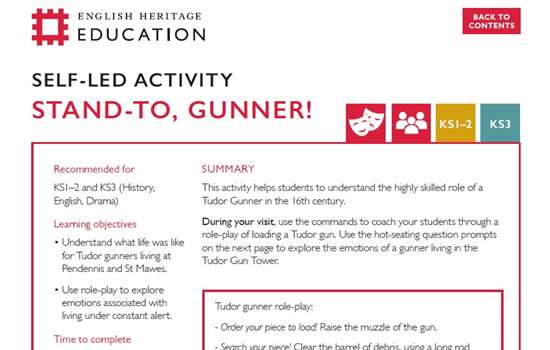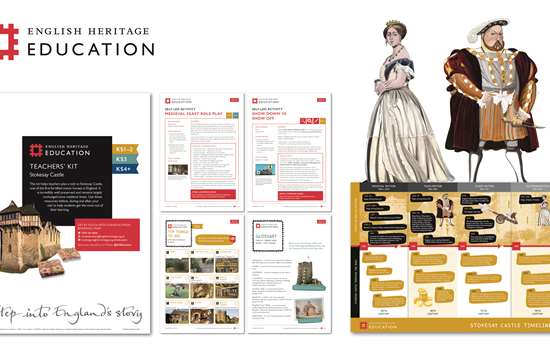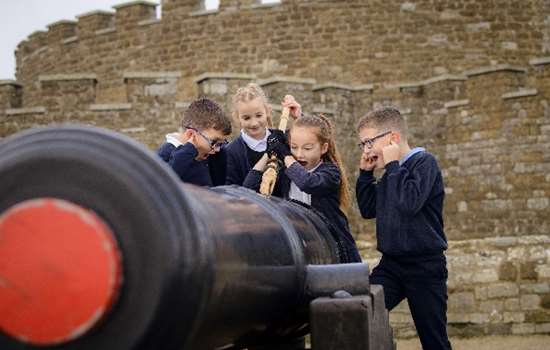Get to Grips with the Area
Deal Castle stood at the centre of a line of three permanent forts, including Walmer and Sandown castles (the latter largely lost to the sea), and four earthwork forts (destroyed) protecting 3 miles of the coast and the ship anchorage offshore. More than 1,400 workmen completed the building works in 18 months. The castles were garrisoned in the late Tudor period and saw action during the Second English Civil War in 1648.
The forts were under the command of the Lord Warden of the Cinque Ports, a high-ranking officer whose original purpose was to regulate the affairs of the Cinque (pronounced 'sink ') Ports (Sandwich, Dover, Hythe, New Romney and Hastings) to ensure the Crown benefitted. The ports originated as a trading alliance in the early Middle Ages and were an important source of ships and men for the Crown in times of war. The Lord Warden was responsible for the defence of the coast of Kent and East Sussex until the mid-18th century, including command of the forts at Deal and Walmer.
In the 1720s, Lionel Sackville (1st Duke of Dorset from 1729) made Walmer Castle his official residence as Lord Warden. From that time, the castle doubled as a fort and a seaside retreat. From the end of the 18th century, it became a private residence, where Lords Warden spent some of their time, usually in summer. These include Prime Minister William Pitt the Younger, the 1st Duke of Wellington and Queen Elizabeth the Queen Mother.
Top Resources
-

Deal Castle Teachers' Resource Pack (KS2-KS4)
Use the historical information, glossary and site plan in this teachers' pack to find out more about Deal Castle.
-

Walmer Castle and Gardens Historical Information, Timeline & Glossary (KS1-KS3) - Walmer Outdoor Learning Kit
Discover the history of Walmer Castle from its construction in the 16th century to the present day.
-

The Cinque Ports and the Lord Warden
Learn about the five major ports on the south-east coast of England and Lords Warden who have been responsible for them.
-

Graffiti at Deal Castle
Find out what the graffiti on the roof of Deal Castle can tell us about the castle's history and its local area.
Suggested Activities
-

Designing Deal (KS2-KS3) - Deal Castle Teachers' Activity Ideas
Investigate the features of Deal Castle to uncover the unique design of Tudor device forts.
-

Captains at Deal (KS2-KS3) - Deal Castle Teachers' Activity Ideas
Learn about the role of the Captain of Deal Castle and how the position has changed since the 16th century.
-

Sources (KS1-KS3) - Walmer Castle and Gardens Outdoor Learning Kit
Explore contemporary sources to discover the story of Walmer Castle and Gardens.
-

Stand-To, Gunner! (KS1-KS3) - Pendennis and St Mawes Castle Teachers' Kit
Take on the role of a Tudor gunner at one of Henry VIII's artillery forts to learn more about life at Deal and Walmer in the 16th century.
Video Resources
-
History at Home Live! Henry VIII and the Tudors
Join Ben Shires and our expert Roy Porter as they explore the life and times of Henry VIII and the Tudors.
-
Postcard from Walmer Castle and Gardens
Take to the skies above Walmer Castle to discover the importance of its location and how its features have changed over time.
-
The Battle of Waterloo: A Timeline
The Duke of Wellington, was Lord Warden of the Cinque Ports from 1829 until 1852. Find out more about his famous victory at the Battle of Waterloo in 1815 in this short video.
-
Walmer Castle Kitchen Garden: From Plot to Plate
Hear from the garden team at Walmer Castle as they look after the historic kitchen garden there.
Link Your Learning
ENGLISH - Choose a Lord Warden of the Cinque Ports or a Captain of Deal Castle to research. Write a short biography for them highlighting their links with the Deal and Walmer area, the time they spent there, and events they experienced.
SCIENCE - The gardens at Walmer Castle have been developed by successive Lords Warden to complement the castle as a comfortable residence for themselves and their families. Explore the gardens with the spotter sheets in our Outdoor Learning Kit or do some sampling to discover the diverse plants and wildlife that can be found in different areas of the gardens.
MATHS - The guns housed at Deal Castle in the 1800s could fire as far as 1.6 miles. Use this measurement, and the distance between Deal Castle and Walmer Castle (1.3 miles), to work out how far a gun at Walmer Castle would have to fire to reach the same target (find the hypoteneuse).
GEOGRAPHY - Encourage your learners to consider the features of the landscape around Deal Castle and Walmer Castle. Why do they think these fortresses were built here? What made this stretch of coastline important to defend in the Tudor period? How has this changed over time?
ART AND DESIGN - Use the seaside footpath to walk between Deal Castle and Walmer Castle, stopping at different points to allow your learners to make quick sketches. They can use these back in the classroom to develop artworks that take inspiration from their local seaside landscape.
DRAMA - Research how Deal and Walmer have changed over time and use your findings to create freeze frames or short mimes reflecting different periods. You could split the class into small groups and assign each one a time period to focus on to create a living timeline.
Visiting Deal Castle and Walmer Castle
Find Out More'Using your local area as part of your teaching is a great way to get students engaged with where they live. It’s so easy to miss what we have right on our doorstep but by booking a free education visit to one of our sites, you can really bring local stories to life and take your students back in time!
Deal and Walmer Castles were built by Henry VIII and have changed and evolved over time to fit the needs of the local area. At Deal Castle you can see how these forts were originally used to protect the coast and explore the defensive features of these important buildings. Despite Walmer Castle being built for the same purpose, it is now the official home of the Lord Warden of the Cinque Ports and has been transformed into a stately home with extensive gardens, giving you the chance to link in with a variety of cross-curricular topics, such as art and science, in an immersive way.
Entry to Deal and Walmer Castles is free for your class and we also offer a free planning visit, as well as a variety of downloadable resources to help with your students’ learning before, during and after your trip.'
- Rob Howell, Education Visits Officer (Kent)



